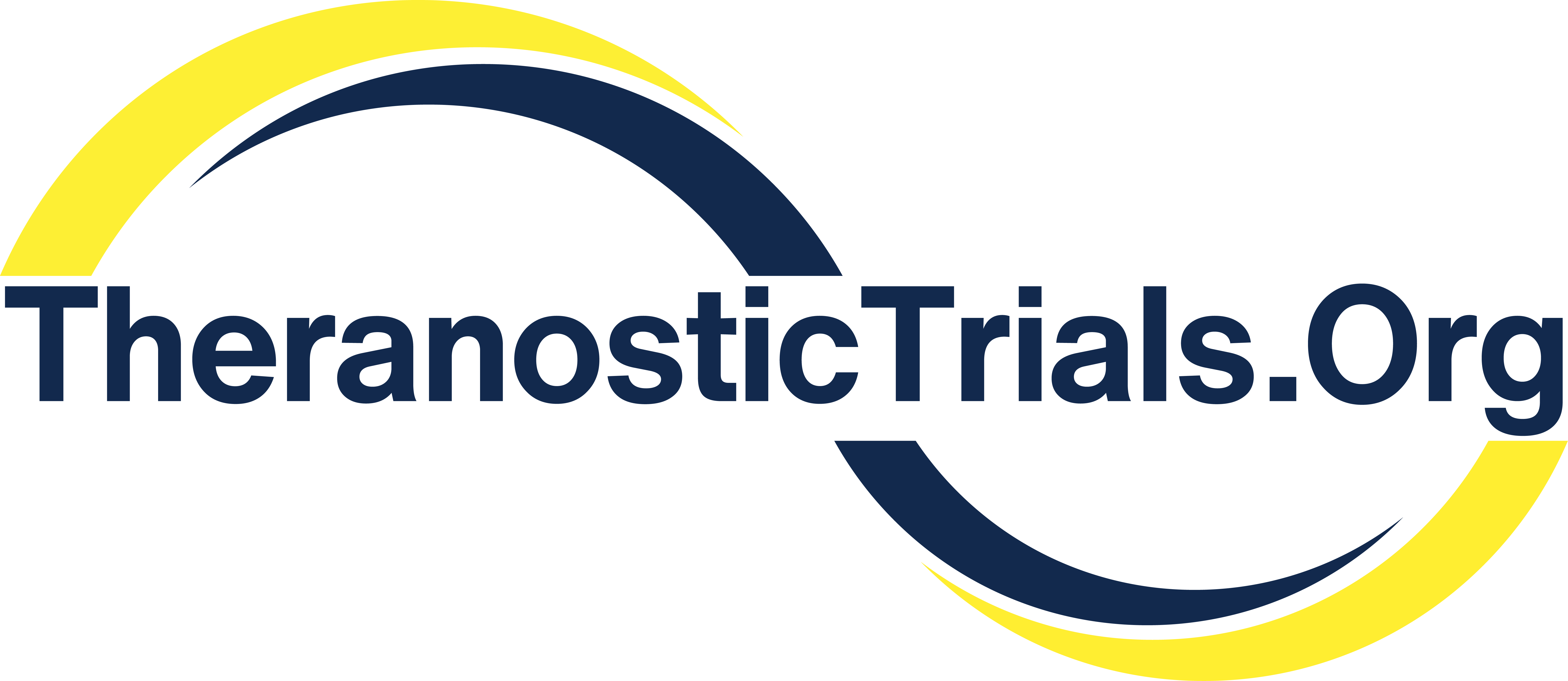Filters
(14 results)
Study Types
Enrolling Status
Study Sponsor Type
Sarcoma
Study Status
Last Updated: Mon Aug 11 2025
Pharmaceutical Trials (Site Sponsors)
NCT04457258
Imaging Undefined Stage
This early phase I trial studies an imaging technique called 68Ga-FAPi-46 PET/CT to determine where and to which degree the FAPI tracer (68Ga-FAPi-46) accumulates in normal and cancer tissues in patients with sarcoma. PET is an established imaging technique that utilizes small amounts of radioactivity attached to very minimal amounts of tracer, in the case of this research, 68Ga-FAPi. Because some cancers take up 68Ga-FAPi it can be seen with PET. CT utilizes x-rays that traverse body from the outside. CT images provide an exact outline of organs and potential inflammatory tissue where it occurs in patient's body.
🇺🇸

Imaging Diagnostic
This is a multicenter, open-label, prospective Phase 1/2a study to assess safety and tolerability, establish dosimetry and to identify an optimal imaging dose (radioactivity and mass dose) and imaging time window of 64Cu-LNTH-1363S (64Cu Radiolabeled FAPi PET/CT Imaging Agent) and to compare its imaging biodistribution with FAP expression by immunohistochemistry (IHC) in patients with sarcomas or GIT cancers.
🇦🇺

Imaging Undefined Stage
Patients with histologically confirmed soft tissue sarcoma (STS)
🇨🇦
🇺🇸

Treatment Undefined Stage
Dosimetry trial of Lu177-PNT6555 in selected Solid Tumors
🇺🇸

Treatment Metastatic Cancer
The purpose of this program is to provide access to [Lu-177]-PNT2002 to patients who have been diagnosed with prostate-specific membrane antigen (PMSA)-positive castration-resistant prostate cancer (mCRPC). Patients must have received at least 1 prior androgen pathway inhibitor (ARPI) and cannot be treated by currently available drugs or clinical trials.
Investigator Trials
Pharmaceutical & Investigator Trials (Non-Site Sponsors)
NCT03418818
A Prospective Study of Hypoxia Imaging in Patients With Soft Tissue Sarcoma Using Positron Emission Tomography (PET) With 18F-Fluoroazomycin Arabinoside (18F-FAZA) in Combination With MRI
This is a dual arm, single centre, investigator initiated study to investigate the use of FAZA-PET in combination with MRI. FAZA is an investigational radiotracer used in PET scans. FAZA PET/MRI will be used to measure hypoxia in sarcoma tissues and will occur for: Arm A: before neo-adjuvant radiation/chemotherapy treatment; Arm B: before surgery (optional). After the FAZA PET/MRI scan, patients will be followed up via telephone, 48 hours after the scan, to see if there are any side effects due to FAZA. Up to 20 patients enrolled in Arm B will receive pimonidazole approximately 16-20 hours before surgery.
🇺🇸
NCT05130255
GD2-SADA:177Lu-DOTA Complex in Patients With Solid Tumors Known to Express GD2
Patients will be treated with GD2-SADA and 177Lu-DOTA to study the safety and how well participants tolerate the treatment.
🇺🇸
NCT06500065
Clinical Feasibility and Potential Clinical Benefit of 68Ga-DOTATATE PET/CT Assessment of Soft Tissue Sarcomas for Potential Peptide Receptor Radionuclide Therapy
This trial studies how well 68Ga-DOTATATE digital PET/CT work in diagnosing soft tissue sarcoma. 68Ga-DOTATATE is a radiotracer that may improve image quality of PET imaging. PET is an established imaging technique that utilizes small amounts of radioactivity attached to very minimal amounts of tracer, in the case of this research, 68Ga-DOTATATE. CT images provide an exact outline of organs and potential inflammatory tissue where it occurs in patient's body. 68Ga-DOTATATE digital PET/CT may work better in imaging patients with soft tissue sarcomas.
🇨🇳
NCT06644287
The Value of 68Ga-grazytracer PET in Monitoring Responses to Immunotherapy of Advanced Soft Tissue Sarcomas
This study aims to investigate the value of 68Ga-grazytracer in predicting the efficacy of immunotherapy for advanced soft tissue sarcomas.
🇳🇱
NCT06645808
The Safety, Tolerability and Biodistribution of a Single Intravenous Administration of Two Zirconium-89 Labelled Vartumabs (F8scFV or C9scFv) in Patients with Solid Tumors - a Phase 0, Open Label, PET/CT Molecular Imaging Basket Trial
VARTUTRACE is a first-in-human PET/CT molecular imaging study in patients with solid tumors. This study will investigate the biodistribution and pharmacology of two antibody fragments binding oncofetal Chondroitin Sulfate (CS). Oncofetal CS are tumor-specific carbohydrate motifs present in proteoglycans and identified by VAR2 Pharmaceuticals as expressed during fetal development. Oncofetal CS reappears in the vast majority of cancers while remaining largely absent from normal tissues. VAR2 Pharmaceuticals recently developed antibodies specific for oncofetal CS. VARTUTRACE uses two of these as radiolabeled antibody fragments to study biodistribution, tumor accumulation, pharmacodynamics and clearance pathways in a diverse patient population.
NCT04067115
SARC037: A Phase I/II Study to Evaluate the Safety of Trabectedin Administered as a 1-Hour Infusion in Ewing Sarcoma Patients in Combination With Low Dose Irinotecan and 3'-Deoxy-3'-18F Fluorothymidine (18F-FLT) Imaging
This study evaluates the trabectedin and irinotecan in the treatment of Ewings sarcoma, with a EWS-FLI1 mutation. Patients will also receive an infusion of 18F-FLT in combination with a Positron Emission Tomography (PET) scan to help evaluate the effect of treatment.
NCT04176016
Phase I Study of Radiolabeled OTSA101-DTPA in Patients With Relapsed or Refractory Synovial Sarcoma
The purpose of this study is to evaluate safety and pharmacokinetics as well as the biodistribution of OTSA101-DTPA-111In and to evaluate the safety of intravenous administration of OTSA101-DTPA-90Y.
NCT05560009
Utility of 18F-DOPA PET/MRI Metrics as a Biomarker for Treatment Response Assessment in Sarcoma Patients: A Pilot Study
This study evaluates the use of a new imaging agent called fluorodopa F 18 (18F-DOPA) with positron emission tomography/magnetic resonance imaging (PET/MRI) for assessing treatment response in patients undergoing standard of care radiation therapy and/or surgery for high-grade soft tissue sarcomas that are new or that have come back (recurrent). Though there have been improvements in treatment options for soft tissue sarcomas, there is currently a need for a non-invasive way to determine a patient's potential benefit from receiving one of these treatments. 18F-DOPA with PET/MRI allows a patient's tumor to be visualized and their response to a given treatment assessed.
NCT05963035
Prediction of Outcome After Chemoradiotherapy for Head and Neck Cancer Using Functional Imaging and Tumor Biology. A Prospective, Non-commercial and Mono-centric Study.
Despite uniform histopathological definition the response of locally advanced squamous cell carcinomas of the head and neck (HNSCC) to ionizing radiation differs greatly with locoregional recurrences burdening this patient population. The addition of concurrent chemotherapy and the use of altered fractionation schedules has significantly increased locoregional control and overall survival over the last decade however, this has come at the cost of increased acute and late toxicity, preventing further treatment intensification in all patients. If the investigators want to increase the therapeutic index of HNSCC, we need to be able to tailor the treatment more individually to each patient. The project aims at developing a prognostic model for head and neck cancer patients based on the combination of known clinical parameters with 1) genetic characteristics of the tumor and 2) parameters derived from diffusion weighted and dynamic contrast enhanced magnetic resonance imaging (MRI) obtained before and during treatment. The investigators plan a prospective trial where 120 patients with locally advanced head and neck cancer treated with chemoradiotherapy will be included. Prior to treatment biopsy material will be collected for genetic analysis and before and during treatment functional MRI with diffusion weighted and dynamic contrast enhanced imaging will be performed. All patients will be followed up multidisciplinary afterwards with follow-up of tumor status and toxicity.



